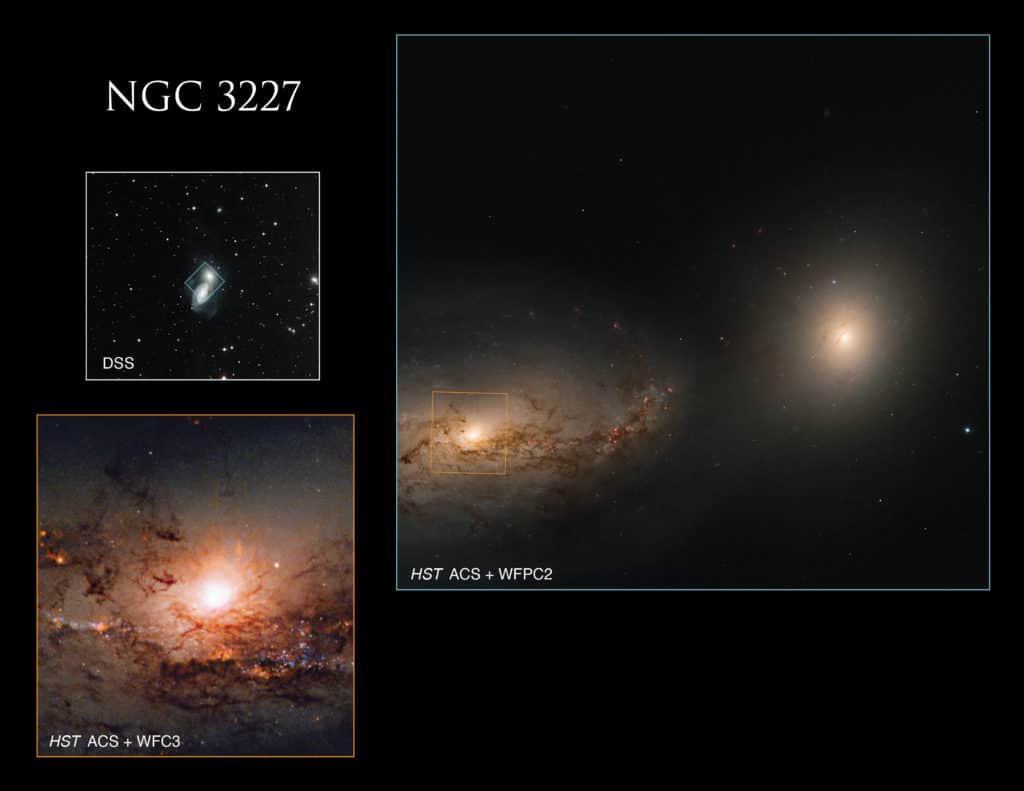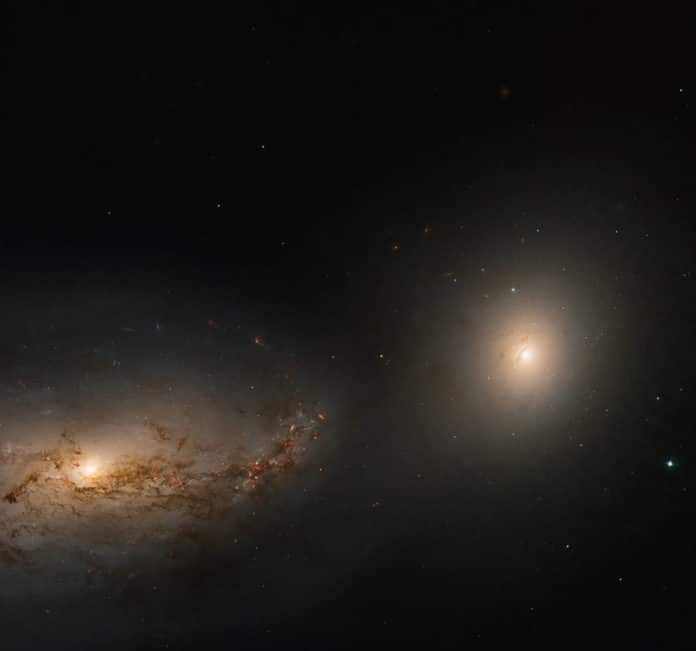NASA‘s Hubble Space Telescope has captured the image of two galaxies wrapped in a turbulent gravitational dance. The system- called Arp 94- is located between 50 and 60 million light-years away toward the constellation Leo, the Lion.
The image shows the large spiral galaxy called NGC 3227 tied in a cosmic dance with its companion, the elliptical NGC 3226. When you look closely at the area between the two galaxies, you can see weak tidal streams of gas and dust connecting them in their gravitational dance.
Hubble studied NGC 3227 and 3226 as part of a program to determine black hole masses by looking at gas dynamics at the centers of bright cluster galaxies. In this illustration, red symbolizes both visible red and near-infrared light wavelengths.

The two galaxies are one of several examples of a spiral with a dwarf elliptical companion that are listed in the Atlas of Peculiar Galaxies.
NGC 3227 is a Seyfert galaxy. It contains a Seyfert nucleus, a type of active galactic nucleus (AGN). Such Seyfert nuclei typically have supermassive black holes, which release vast amounts of radiation along the black hole’s axis of rotation.
